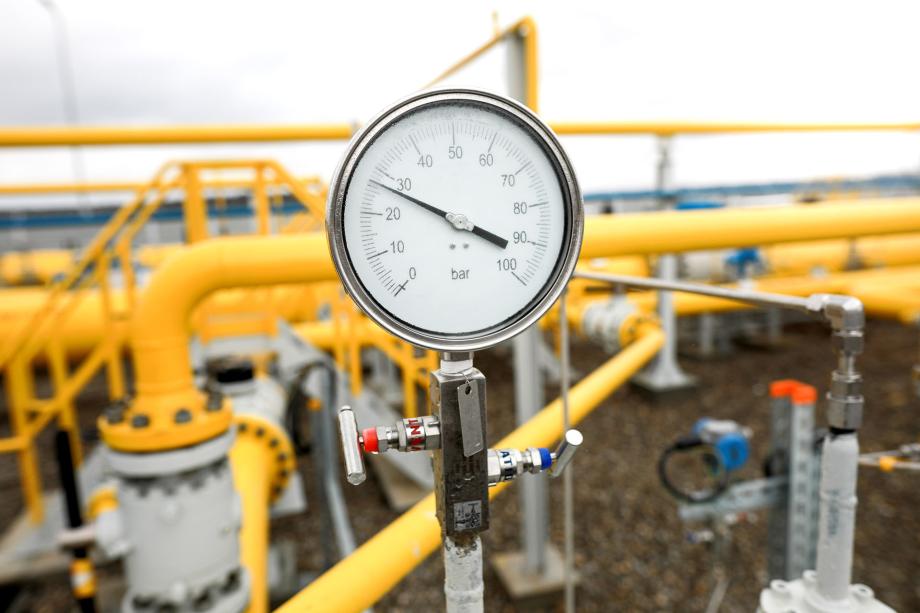Opinion: What if gas stops flowing through Ukraine?

Russia continues to keep more than 100,000 troops on its long border with Ukraine and carry out military exercises in Belarus. The US has, in response to Moscow’s threat, recently sent 3,000 additional troops to Eastern Europe while threatening that the West will introduce crippling sanctions against the Kremlin should Russia invade Ukraine.
The current crisis has raised many questions among observers and commentators about what the consequences of a war would be on the EU’s energy security. The reality is that Europe already finds itself in the throes of an energy crisis. Gas has reached record prices in recent months and energy price volatility is expected to become the new normal.
Gas prices are likely to remain double their standard value until 2025 and blackouts could roll out across Europe. S&P Global has warned that any conflict affecting gas supplies into Europe could have serious knock-on effects on power, carbon and coal prices.
Focusing precisely on gas, what is Ukraine’s transit role today and how would an armed conflict affect the EU’s security of gas supply? Ukraine was a key terminal in the European energy system in the 1990s. However, route diversification – through the construction of the Yamal-Europe pipeline crossing Belarus and Poland, the Nord Stream I pipeline to Germany (with Nord Stream 2 awaiting certification), the Blue Stream and TurkStream pipelines to Turkey – has caused the share of gas that crosses Ukraine to drop by 55 percentage points, from 90% to 25%, between 1991 and 2020.
Since 2020, gas volumes transported through Ukraine to Europe dropped by another 25% in 2021, and by 57% in January. As of today, the number of EU countries heavily dependent on gas supplies via Ukraine is limited to Slovakia, Austria and Italy.
The impacts of a potential disruption in gas flow through Ukraine could be managed, assuming a well-functioning market and regional collaboration can be established. This is much more feasible today than during the 2009 Russia-Ukraine gas crisis, when 80% of the EU imported gas crossed through Ukraine.
Europe has since developed gas and electricity interconnections and reverse flow systems. As long as the gas supply disruptions are restricted to the Ukraine corridor, the downstream consequences will be limited to Slovakia, Austria and Italy, which would have different options to cope.
What should really worry the EU is the possibility of Russia using its gas as leverage by cutting off supplies to put pressure on the West in an effort to resolve the current Ukraine crisis in Moscow’s favor.
After Russia (41%), the major gas exporters to the EU are Norway (16.2%), Algeria (8%), and Qatar (5%). While the former two are already exporting the maximum gas production capacity to Europe, Qatar’s ability to provide additional gas is hampered by its binding contracts with Asian countries.
As for LNG, imports from the US have increased steeply, reaching a record high in 2021. Additional volumes would mean higher costs and infrastructural change – in particular, terminal regasification. New LNG terminals are in development, and US LNG imports are expected to further increase in the coming years. However, none of the aforementioned countries would be able to replace Russian gas in the short to medium term. This explains the cautious EU approach in the current Russia-Ukraine crisis.
The EU is discussing contingency measures to deal with risks from surging gas prices due to potential reduction in gas flows from Russia. Since mid-2021, Russian gas flowing into the EU is 25% lower than expected. For this reason, spot gas prices in the EU quintupled in a year.
The current crisis can turn into a propulsive force to further reflect on energy security in the EU. Kyiv’s energy security directly depends on the completion of market reforms, progress in decarbonization, and synchronization of the national energy system with Europe’s.
In the meantime, as gas has been embedded in the EU taxonomy, deregulation of the Ukrainian gas industry is a fundamental condition to foster gas production and advance energy independence. At the state level, it is extremely important to create transparent conditions for attracting investments necessary for energy reforms and fulfil obligations to investors.
The article was originally published in New Europe.
